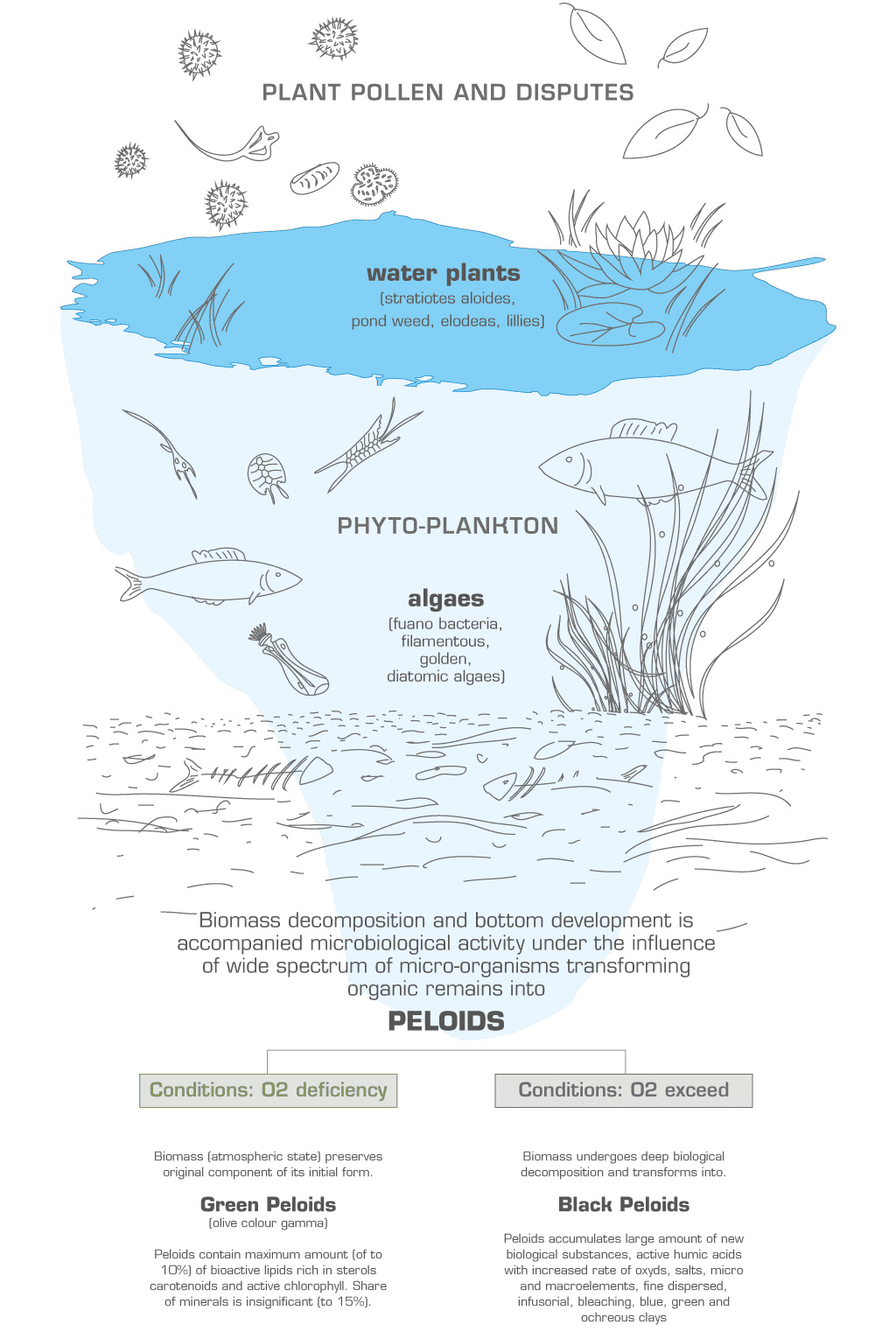Peloids are the deposits of the silts formed after an entirely biological process by mineral degradation of phytoplankton and zooplankton.
Decomposed under oxygen deficiency, peloids can be autochthonic (resulted from biomass transformation) or allochthonous (formed from water catchment area humus substances) by their origins.
Because of strong organic dominance autochthonic peloids are considered to be very valuable substances. It’s determined by the fact that initial biomass organic degradation doesn’t produce multi-nuclear(s) aroma structures (benzpyrene type) unlike in soil, peat or carbon humic substances.
